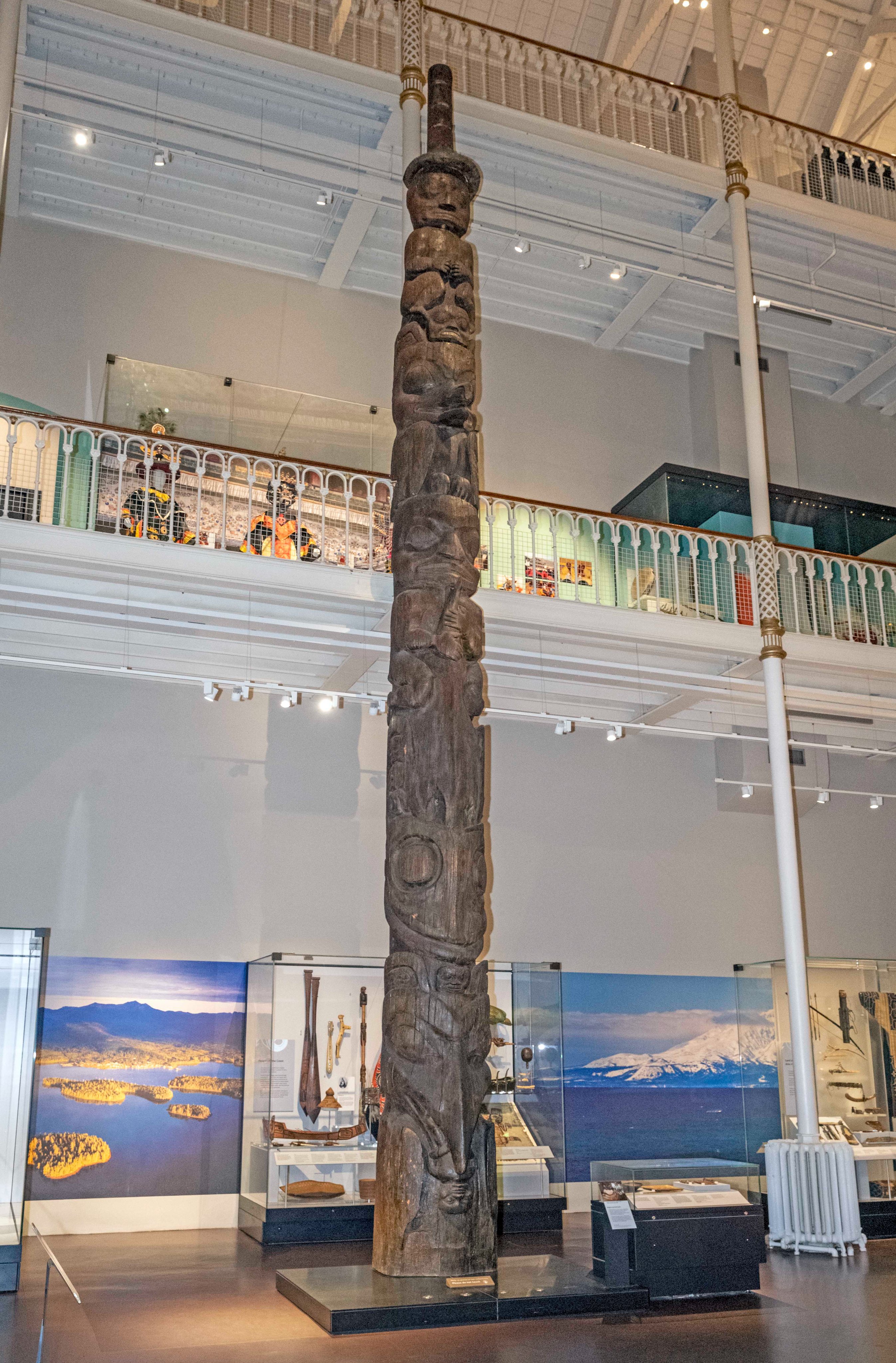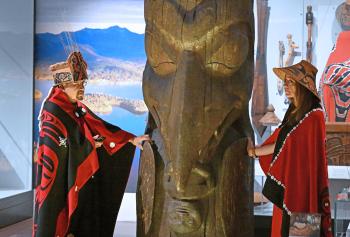Image Caption
Summary
Local Journalism Initiative Reporter
Windspeaker.com
The Nisga’a Nation, and especially the house of Ni'isjoohl, is celebrating a Dec. 1st announcement from the National Museum of Scotland. It will return a memorial pole that was stolen from Nisga’a territory and later acquired by the museum.
"In Nisga’a culture, we believe that this pole is alive with the spirit of our ancestor,” said Sim'oogit Ni'ijoohl, Chief Earl Stephens.
“After nearly 100 years, we are finally able to bring our dear relative home to rest on Nisga’a lands. It means so much for us to have the Ni’isjoohl memorial pole returned to us, so that we can connect our family, nation and our future generations with our living history."
Sigidimnak Noxs Ts'aawit, Dr. Amy Parent, is Canadian Research Chair for Indigenous Education and Governance at Simon Fraser University.
“We’ve been given an opportunity to right a colonial wrong,” she explained. The United Kingdom voted to support the United Nations Declaration on the Rights of Indigenous Peoples. Parent said the return of the pole is a tangible act toward implementing that commitment.

It was through Marius Barbeau that the pole found its way to the museum. While the Nisga’a say it was stolen in 1929 while their people were away for their annual hunting and fishing journey, the museum says it was purchased by Barbeau from the Nisga’a owners and sold to the Royal Museum of Scotland, which later became the National Museum of Scotland.
Barbeau was an ethnographer and curator at the National Museum of Canada from 1911 to 1949. His name is storied as one of the “fathers of anthropology for Northwest Coast peoples.”
A delegation from the Nisga’a Nation traveled to the museum in Edinburgh in August to request the return of the pole, carved by master carver Oyay Tait and assistant Gwanes. It was the first time in 93 years that a Nisga’a hand had rested upon it.
The request was formally agreed to Nov. 30 by the Board of Trustees of National Museums Scotland and subsequently approved by the Cabinet secretary for the Constitution, External Affairs and Culture, reads a press statement.
“We are committed to promoting understanding and dialogue with respect to those parts of the Museum’s collection associated with our nation’s colonial history and its difficult legacies,” said Dr Chris Breward, director of National Museums Scotland. “The fact that our Trustees have agreed to this request demonstrates our readiness to act on this commitment.”
Carved in 1855 and erected in 1860 in the Ank’idaa village on the Nass River in northern B.C., the pole is 11 metres high, and honours the name and history of the Ts'wawit, “a dear ancestor who died in war, defending his family and nation.” Before he died, Ts’wawit was next in line to be chief. The memorial pole was commissioned by a matriarch of the House of Ni’isjoohl, Joanna Moody.
Dr. Parent’s Nisga’a name marks her relation to the warrior Ts’wawit. Her brother holds the name of Ts’wawit today. The pole features Raven, along with other significant crests of the house, and “represents the history of our house and our relationship to the land for time immemorial. And that encompasses the spiritual dimension of who we are as Nisga’a people of the House of Ni’isjoohl.”
Parent described the feeling of climbing the escalator with her cousin Shawna McKay, one of the youngest members of their house. Entering the great room where the pole was being kept, Parent said “I felt the room exhale in a sigh of relief. And my cousin, she felt like a weight was taken off her shoulders, physically.”
“We felt like the pole had waited for us, and we just felt its strength and its determination. To be a survivor, and to sit there waiting for us for over ninety years to come and have that reconnection in that moment with it.”
As for next steps, Parent has a suggestion.
“If Prime Minister (Justin) Trudeau is wondering what to get me for Christmas, he could arrange air cargo for us to bring the pole back,” she chuckled.
“We've been really appreciative of our treaty partners, the government of Canada and the province who have been advocates with us in this process and have been standing beside us.”
A beautiful new pole could be in the works as the Nisga’a Nation has proposed that the government of Scotland commission a Nisga’a master carver to come in and carve a pole that tells the story “of this reparation, and our ongoing relationship with the Scottish peoples,” said Parent.
Local Journalism Initiative Reporters are supported by a financial contribution made by the Government of Canada.

